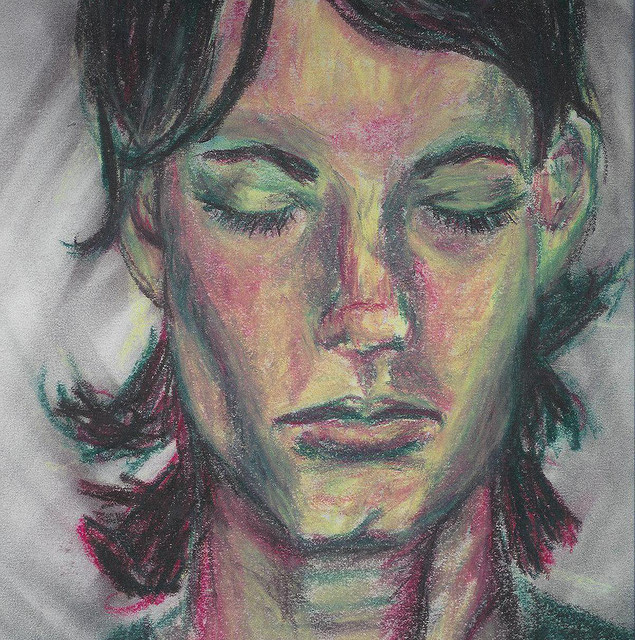The idea of ‘getting present’ does not quite jive with my experience, yet it seems such a popular phrase.
If we take eastern philosophy, the context from which so many of these ‘getting present’ techniques come from, and understand the original concept of mind, we might propose this giant request in a slightly different way.
I don’t know about your mind, but ‘mine’ is sometimes quick, slow, spacious, cluttered, and definitely self-employed—that is, it’s on automatic.
Yet with practice, this mind can both be narrowly focused on a task or object and allowed to relax into a wide focus. In this wide focus, the mind seemingly dissolves into a field of awareness, becoming awareness itself. It is in this non-focused state that presence is literally discovered as an already existing background to the gathering activity of mind itself.
Presence is simply not something we can get, nor is it something we can do. The active mind can be monitored so that larger gaps between thoughts can be appreciated thereby creating a capacity for mindfulness. But, the mind itself is not designed to be present! I do think that what we are suggesting is that I, the mind, am slowing down.
Fair enough. But accessing what already is, was, and has been is the real quest. So, if presence cannot be known by the mind monitoring itself, where is it found?
From the neck down!
In more than twenty years of teaching Hatha Yoga I have marveled at a particular phenomenon. For the duration of a class and all the way through Savasana, the final resting pose at the end of each practice, attention is moved throughout the body.
For example, I guide students to develop an inner eye so to observe particular alignment cues, parts and areas of the body, certainly the breath, or the movement of the body in response to breathing, all internal, with some cues being more subtle than others. And yet, by the time a student has driven half way home after class has ended, their attention has dutifully landed back up in the head in their usual location of their sense of “I.”
What to do? Even powerful suggestions such as “take up residence in your body,” or “rest in the inner territory of your Being” lack lasting effects. So, I began guiding students to narrowly focus their mind’s attention in the space of the body and to remain there with a relaxed focus. This is a practice in and of itself.
Gently nudging them, I would suggest “As relaxed awareness allow sensations, feelings or thoughts to rise and fall like a dandelion puff in a slow, gentle wind.” In Yoga philosophy thoughts, feelings, and sensations are all made of mind stuff, or Chitta. They arise and slip away, temporarily present, moving and changing. That is the nature of mind. And mind is everywhere! Imagine each of your eight billion cells with one teeny, tiny open eye, the open eyes of wide focus awareness! What a sight! Imagine instead that when mind is focused these billions of cells now have squinting eyes, perhaps creating tension from the tendency to create so much one pointed focus.
So the relief of wide focus seems to allow for a spacious Beingness to emerge throughout the body with its immediate gift of Presence. Just like meditation, it is not found in the mantra, the sound upon which mind is focused, but in the gap between the repetitions and in the stillness and silence after the mantra is dropped.
In addition, I have a theory, just a theory, that the body and its cells, love to be seen. Just like anyone or anything else, when they are acknowledged or seen, they tend to come alive. When attention is guided onto or into a part of the body, the body awakens; it is lit by the light of awareness. The more we practice resting mind in the space of the awakened body, the more I witness Presence emerging. Then, when anchored in the knowing of my Self as Presence, then mind can mind, emotions can stir, and sensations can come and go without being catapulted into the minds habit of defining that ripple of mind stuff. It can all just be seen and Beingness can preside. Presiding Presence abides as the refuge that we are.
And I also see that as presence prevails, the students sense of identity begins to shift from the mind created “I” handily created moment by moment to a way of being in the world that has less and less personal bias and more and more universality. Perhaps that sounds like there is no “I” getting present, but an inherent presence that has universal qualities such as acceptance, allowing, and even tenderness.
I hope that as our language better reflects our experiences we are able to point in the direction of greater wisdom too.
Love elephant and want to go steady?
Sign up for our (curated) daily and weekly newsletters!
Author: Anna Pittman
Editor: Renee Picard
Photo Credit: liz_pics at Flickr











Read 0 comments and reply